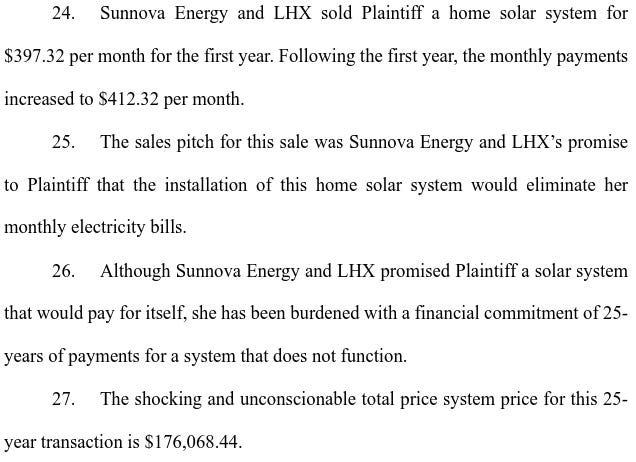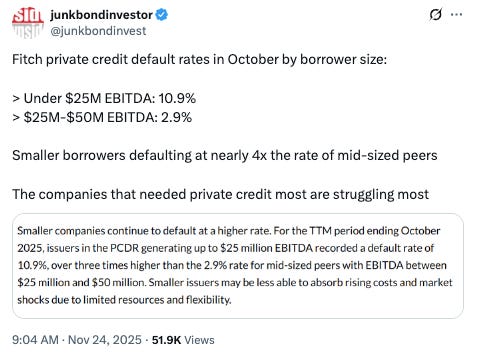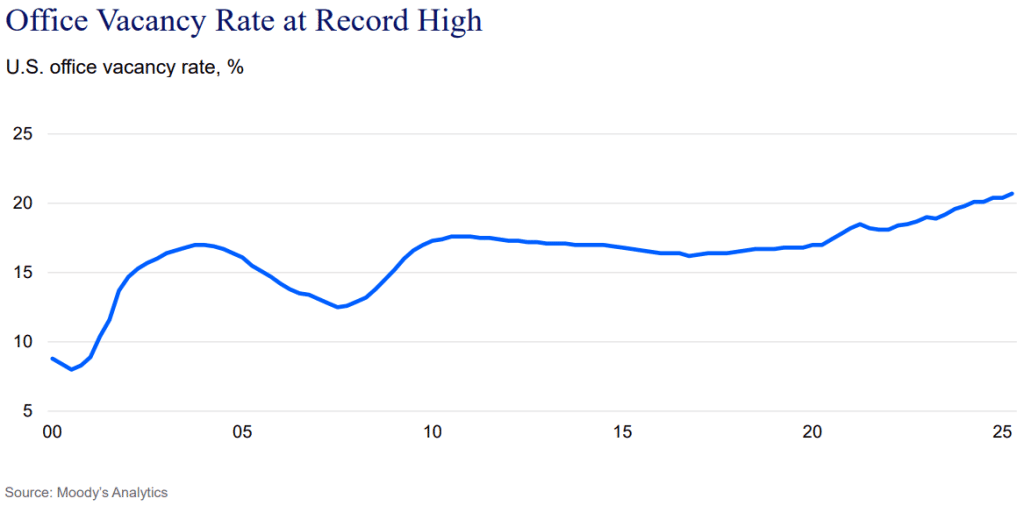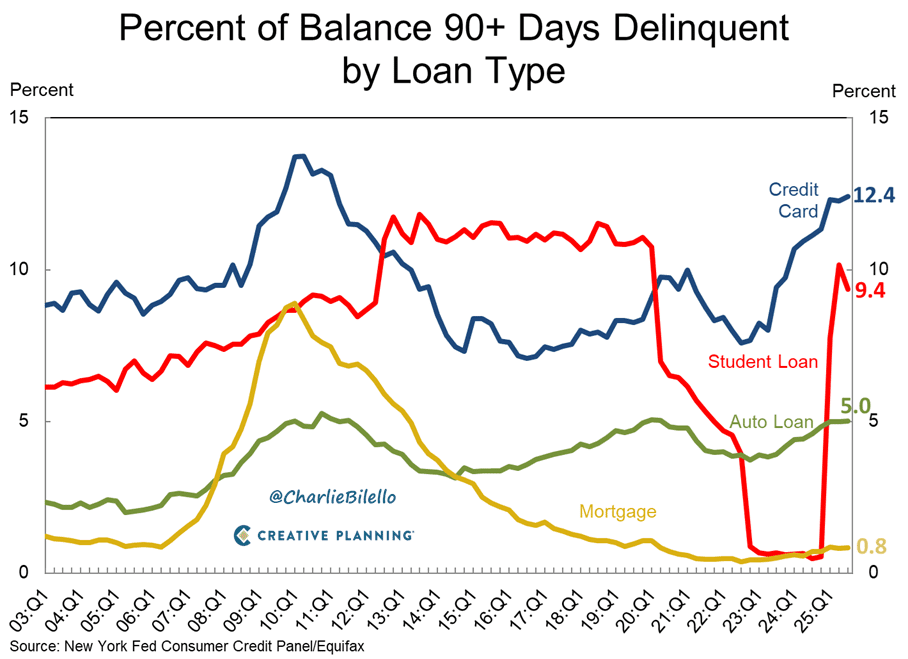😎Notice of Appearance - Scott Greenberg😎
Plus: ConvergeOne & Sunnova updates.
Today we close our recent guest series on LME* with an appearance by Scott Greenberg, Partner and Global Chair of Gibson Dunn’s Business Restructuring and Reorganization Practice group. Liability management has become the dominant theme in restructuring over the past several years and nobody has been more front and center in that world than Scott. We look forward to diving in with him and gaining from his perspective.** Now LFG.
PETITION: Thank you for making an “appearance” with PETITION, Scott. Given the nature of your practice, we want to start with the highly unoriginal topic that people in the RX industry don’t seem to want to ever stfu about: liability management. Let’s start with laying a foundation: how would you describe, as succinctly as possible, the difference between what’s been dubbed LME 1.0 versus LME 2.0 versus LME 3.0?
Scott: Everyone’s favorite topic, of course. Simply in my mind … LME 1.0 is the more aggressive form of LME … the truly non pro rata deals. Serta, Boardriders, Trimark and all the 2020 covid cases where it wasn’t in group or out group, it was in or out. Since then, there has been a bit of a move to the middle. Tiered transactions and the art (not science) of the sponsors, bankers, lawyer and lenders figuring out just enough incentive to get people to participate, while also providing a better deal for the larger lenders that are driving the transaction. I’m personally not convinced there has been a 3.0 — there have been tweaks around the edges and perhaps an uptick in the proverbial “deals away” but candidly I don’t think the ultimate outcome (i.e., tiered deals) has really changed that significantly where any of us should be patting ourselves on the back quite yet for 3.0. So perhaps more to come?
PETITION: How do the Serta, Wesco/Incora and ConvergeOne rulings factor into those distinctions?
Scott: Obviously all of these transactions have created risk factors now that there have been some adverse rulings. Lawyers, bankers and investors are smart — folks just figure out how to build a better mouse trap. So when Serta happened the world of LME didn’t end as we know it — far cry — as it’s been a busy ‘25 on the LME front. However, obviously folks need to price in risk, risk of litigation, risk of delay, noise and impact on trading prices. So I think these rulings have encouraged folks to try to find a deal that has the highest participation possible. All of these LMEs are risk free once someone consents (and releases other parties) by participating, even if its at depressed levels. So the key is finding the deal that brings the most folks in while also getting the sponsor what they want (discount, new money, perhaps maturity) — and the lenders what they want (less discount out of their hide, better economics, and less litigation risk). ConvergeOne I think is a different animal. Holdbacks and backstop fees in bankruptcy have been around for a LONG time. I don’t view them as “LME” at all. I think that decision honestly is going to make it hard to encourage the biggest folks to step up in some of these situations and backstop, restrict, give up liquidity etc., if there is no upside.
PETITION: Whatever the vintage, it sure seems like LME has really slowed down quite a bit in the past couple of months. What do you attribute that to and should we expect things to pick back up in ‘26?
Scott: I don’t know if its slowed down as much as restructurings (old school) have ticked up. With a lot of situations just being beyond repair, they’ve headed right back to the courthouse. Candidly, it’s a bit of a nice relief: it feels like the good old days. But I don’t think Kirkland & Ellis LLP’s Dave Nemecek and company are going on vacation anytime soon — it’s all still happening in the background, just need to wait for them to print. The headlines of some big filers recently have just distracted folks from the LMEs in the works.
PETITION: Do you expect to see more post-LME bankruptcies in ‘26? What characteristics do you see in companies that engage in an LME and then file anyway? Any common themes?
Scott: Yes. There are a couple on my plate and I’m sure the same for others. The reality is most of these LMEs are (from the sponsors’ seat) a play for time. Discount capture/deleveraging to give the company a better shot at turning things around, usually some new money particularly since the docs will be tightened as part of any LME and, therefore, optionality for future liquidity is way off the table, and sometimes coupled with a maturity extension (the trifecta or triple lindy as I like to say). All that said, if the business is otherwise in a downward spiral or faces macro or industry headwinds, it may not be enough. The play is to give everyone more time to see if a full blown restructuring and change of control can be avoided. And given the sheer volume of LMEs that have been done in the past few years, we aren’t outside of the window that was created in most of these to see if things turn. So, will they all fail? I sure hope not and I can say pretty confidently no, but will a decent amount of these, despite everyone’s best efforts, still end up needing a true “fix” thru a more substantial deleveraging and potential in court process, yes. It’s interesting as advisors because not only are you looking for new deals and future pipeline but occasionally you find yourselves looking in the rear view mirror for old LMEs that you thought were done and dusted and take another leg down to see if they are going to make their way back to your desk.
PETITION: Cooperation Agreements are a hot topic these days. What do you think of them generally? What changes have you seen with them over time? How are those changes good? How are they bad? What do you make of this 👇 take?

Scott: Perhaps not surprisingly, I don’t agree with Spooky and it kind of shows the lack of understanding of what coops do (and don’t do). Meaning: signing a coop doesn’t “delay much-needed corporate restructuring.” The flexibility that exists in the loan docs and indentures are the cause of delay. Sponsors and companies have options even in scenarios where it likely is the case that the obvious answer is to rip off the band aid and fix the balance sheet. But as I’ve experienced many times when the sponsor has years left to maturity and can go third party or use the flex in the docs to say raise some much needed incremental liquidity away AND preserve ownership of the asset, they will (why not?). As a footnote, most folks that do what we do don’t get paid for any of this work (including for putting together coop agreements) unless and until the companies decide to engage with our clients so the thesis that the advisors benefit financially also is just wrong. Coops are meant to try to level the playing field with some of the flex that sponsors (and their crafty advisors) engage in solutions that work for both sides, not just the sponsor.
In my mind, to simplify it: there are three types of coops. Old school original coops: come one, come old, everyone gets the same treatment. This is where the market started. 50% coops where the folks that can control amendments and the like to docs to facilitate an LME use that power to lead a deal that is most beneficial to the group (these are less common and tend to create real trading issues and price differentiation in the markets). And the most common nowadays in my view is the open-to-all coop, but contains carveout premiums or other goodies for the largest lenders (steerco). So while everyone can participate, it also doesn’t guarantee equal treatment if/when a deal is finally cut.
PETITION: There’s been a lot of talk lately about the latest coop technology that benefits steering committees (“steerco”) — so-called carveout premiums — and how they’ve created pricing bifurcation in the market. What are your thoughts on this purported steerco benefit and what challenges do you think they might be susceptible to?
Scott: Yes, this is version #3 above and I think the most common coops you see in the market nowadays. Everyone is welcome to join but there is an acknowledgement that the largest folks that lead the transaction, restrict, and sacrifice liquidity in doing so, will be entitled to some goodies. Candidly, I’m not offended by this logic. Long before LMEs people backstopped DIPs, rights offerings and the like, and got incremental economics or other treatment for doing so. This is really no different in my mind. BUT … it’s all about how far that carveout premium is pushed. Work fees, some economic sweeteners … I don’t think anyone would argue with the larger folks have earned. The issue is in the world of tiering LMEs where the spreads between steerco and the others gets really big (20-30 points). That is when people start to question the benefit of being in the coop. So the way that provision is drafted, how much flex it has, and whether there are any guardrails starts to become important for folks that aren’t the largest folks when deciding whether to sign up to a particular coop. Like everything else in our market, folks will push the boundaries to figure out where they rest.
PETITION: To what degree, if at all, can professionals in your position influence who is and is not part of a steering committee leading an LME? What do you make of the idea that certain lawyers might (😉) threaten to exclude certain funds in LME deal #2 if said funds don’t hire said lawyers in LME deal #1?
Scott: This one I’d love to take head on because I think historically our competitors have tried to throw shade at us given our market share — there’s gotta be an excuse other than perhaps we are just doing great work, right?
Here is the reality: everyone has their relationships. It’s how we all get the next deal. Those are built over time and require trust on both sides of the relationship. In my mind, steercos are 99.9% determined by size. You need 50.1% to do most of these deals, sponsors want the smallest group possible to do that to keep noise down (i.e., the largest folks), and so players with size will again and again be the ones leading the transaction and choosing the advisors. For the most part, it’s the same shops in each one of these deals with size. I find it funny the idea that any advisor can say to a big shop if you don’t hire me here you are out of the next one because the reality is that is a threat that only happens once. Meaning, that investor, while maybe they get excluded from that one transaction, now has its gun out for that advisor in every other deal till the end of time. That doesn’t sound like a good idea if you want to be in this business for any extended period of time.
No advisor I’m aware of, for example, has the power to say if all the steerco guys own say >$200m or more of paper, to grab their friend that owns $20m and add them. And the inverse is true, if all the big guys are >$200m in a steerco in a credit, no advisor is going to be able to exclude someone because they didn’t hire them in another deal. Math dictates here as much as certain gossipy advisors like to try to drum up drama. The LMEs are hard on advisors: most of us are close with many folks in the market. In some deals they are big, others they may be small. But the reality is as advisors … when we are hired to do one of these transactions … we have to do what’s right for our clients. And if that means people get mad at us because they are under the false assumption we call the shots, so be it. I know some advisors try to please everyone and wave more folks into a deal even when their clients may not like that, but unfortunately this business isn’t always a popularity contest. If it was, my job would be much easier.
PETITION: There are those out there in the market who want to attack cooperation agreements as anti-competitive. Walk us through the alleged argument and give us your best argument for why it might be utter horsesh*t.
Scott: Ha! You want me to make Kirkland & Ellis LLP’s arguments for them on the anti-competitive front? Nah — they are more than capable and I think it’s wrong (and have spent way too much time with my anti-trust colleagues making sure). If you think about it, what they are really doing is proving the coops work in terms of not allowing sponsors to run roughshod over the lending community. It’s a stretch that this is where they are going with the argument. Don’t get me wrong, I’m sure there are examples of some type of lock up that if taken to the extreme could very well would be anti-competitive in nature, i.e., all lenders sign a coop to not provide capital to XYZ sponsor for less than S +1000% in any deal they bring to market, or something. Sure, that seems to be a risky proposition. But that’s not what these coops do (at least not ours): they are there to provide a united front for a negotiation with the sponsor and the company, period. Now I know we now have this Selecta litigation out there — not our deal — and I’m sure we will all be watching how it goes. Interesting that lenders (who benefit from coops) decided to ring this bell. Seems shortsighted.
PETITION: Have you ever seen a party violate a coop? What happens in that context?
Scott: Hmm. Inside baseball? I’ve had two deals where arguably folks were going in that direction and I had a sense. Luckily I was able to talk to said folks one off and convince them that it would be bad to be the first defendant in one of these coop violation suits, and candidly, the reputational hit alone probably isn’t worth the upside. So some close calls, but no actual violations as far as I’m aware. In my mind, it’s a contract between sophisticated investors and just like any other contract if someone breaches parties can sue. I think the real question is the remedy. Coops all have specific performance provisions, so depending on which jurisdiction (or country) you are in, it’s a function of whether a court would enforce a specific performance provision versus just provide an aggrieved lender with damages. But I don’t think a breach here would be without consequence.
PETITION: Last one on coops, promise. A lot of the market activity seems to have moved earlier and earlier against a maturity, often times surprising issuers and sponsors. Some might argue that some of these negotiations are manufactured by RX professionals who are trying to get in the door earlier. A counterpoint is that that usually just means said RX professionals are working for “free” for longer. What’s your take on this dynamic?
Scott: I don’t think coops determine advisors. Meaning plenty of deals where we are early have no coops at all because they aren’t needed and don’t make sense. That is definitely the vast majority. Others do — and are obvious fact patterns where a coop makes sense (take Altice France). And, yes, coop or no coop, most of us are working for free for a long period of time before there is engagement. Here is what I would say: it is not a one size fits all approach to coops. It’s very fact specific and candidly depends what folks are trying to achieve. Are the biggest lenders inclined to do a 51% lead deal and drive the negotiations? Then a big everyone-is-included coop doesn’t make a ton of sense. Is there a near dated maturity and folks want to lock arms to negotiate more sponsor capital coming in to facilitate a self help A&E? Than maybe one does. What I would say has changed is years ago you’d have to convince certain clients the benefit of a coop in certain situations and there was resistance. Nowadays we literally have clients tell us a certain situation needs a coop and if we (and our banker) suggest it doesn’t for the following reasons, we more often than not get overruled. So the landscape has shifted quite a bit: I’m actually in the camp — yes, I AM — of less coops in situations where the game plan is uncertain.
PETITION: The primary financing market is trying to get out ahead of lender coordination/agitation with all sorts of new technologies. What are you seeing now and how effective are these technologies? Why are we hearing about “disqualification” so much more these days — both in the context of lenders and professionals?
Scott: Yes. It seems like there is this tug of war going on between sponsors and lenders on organization and what it means for an eventual negotiation. The DQ stuff is silly: weaponizing massive DQ lists is bad for liquidity. There is obviously a business rationale for some form of a DQ list to deal with competitors and perhaps certain funds the sponsor has had a bad experience with. But DQ lists in the hundreds like the one deal that got picked up in the press earlier this year is insane. And, candidly, we are all over this issue when we are finalizing a deal with a borrower to ensure we see, and vet, the DQ list to make sure it’s reasonable. It’s not our job to determine who is or is not on there but it is our job to make sure there isn’t a trap door to let the sponsor add ad nauseum post-closing. That would be a miss.
On the DQ of advisors, I don’t think it has legs. Putting aside the basic fact that, at least for lawyers, it violates the ethical tenets about clients having an absolute right to choice of counsel (same reason lawyers don’t have gardening leaves), it’s also a VERY slippery slope because that gun can easily be turned around against sponsor advisors. I’m not even sure it’s enforceable as much as a scare tactic, and candidly, I wouldn’t want to be the lawyer drafting that type of provision and have to explain it to the ethics committee.
PETITION: On the flip side, what do you make of all of the blockers (and their carveouts)? Do you have some sort of cheat sheet you can share with us on these?
Scott: J.Crew, Serta, Chewy, Incora … here is the punchline: while it may make people feel warm at night at syndication to check the box that their new loan doc has J.Crew pro[tection], or Serta pro, I think the problem is at that early stage no one is really paying a lawyer to dig in to the language to make sure folks understand what they have. We’ve had plenty of J.Crew blockers that you can drive a mac truck through so I think while it’s a good thing in terms of lenders having a “tighter doc,” words matter.
PETITION: Talk to us about the “deal away.” It seems like it’s been a big threat in the markets these past couple of years with very little to no traction/bite. What do you make of “deal away” prospects and how do you advise the ad hoc groups you’re leading to contend with that possibility when negotiating with an issuer/sponsor?
Scott: Lawyer answer? It depends. In all seriousness, if a situation requires liquidity but has, say, a maturity 18 months out. The deal away is a threat, but not really. Meaning to what end? You can drop an asset and get the capital you need but a year later when you need to solve maturity and you have a syndicate of pissed off lenders, you really haven’t achieved much unless you can take them out. Long dated maturity, loose docs, liquidity need and your debt stack trades at 70: dropping an asset and trying to do discounted exchanges is a real threat (hence the coop comes in to play). But I don’t think the deal away is dead, I just think it’s every single deal we work on; it’s almost expected that you will be threatened with the deal away while at the same time being asked to put up capital, give discount, etc. It’s normal operating procedure.
PETITION: You guys were involved in the Altice LME transaction. What are you seeing in Europe these days in terms of RX generally and LME specifically? What are some interesting issues there that have yet to play out that could impact volume in coming months/years?
Scott: Altice was a great deal on many levels. First massive, widely signed up coop in a 20 plus billion dollar group. First massive LME (although I wouldn’t think of it as I would a US LME), where there was discount given and maturities extended, but in exchange for equity upside. I’ve been saying for years I thought most of the US technology would find its way across the pond but with a couple of caveats. 1) Smaller capital stacks so less discount to capture often and therefore it’s a harder call for sponsors to potentially take the reputational hit. 2) A smaller fish bowl. Obviously these LMEs ruffle some feathers amongst the lender community. There, it’s a much tighter knit and smaller community so one needs to tread lightly. 3) Local law overlay. In cases like Altice’s SFR (and France, by way of example, has a ton of distress at the moment), there are local law concerns on the governance front that could lead to real liability for directors and officers even if the docs technically permit the transaction. So those factors guide against a rehash of what has happened in the US. That said, LME has definitely come to Europe and I expect it to continue to grow, but within the confines of my prior commentary.
Interestingly enough, I’m seeing in a couple deals now here in the US that are more “SFR Styled.” Meaning discount is being asked for, new money etc., however the sponsor is willing to give up equity ups on an out of court basis.
PETITION: What are some of the biggest changes you’ve witnessed happen to the business of bankruptcy over the course of your career?
Scott: Ha, I’m old … a lot. But the biggest change has really been the last 5-6 years where the market has become obsessed with the out of court deal and LMEs. The focus of my best hires and next generation is really the super savvy, finance-oriented bankruptcy lawyers. That was much less of a thing 23 years ago or so when I started. Now it’s the most important skill set one can develop as opposed to running to court for motion practice. The folks I see rising through the ranks the fastest, making a big difference, developing client relationships aren’t just the ones that are conversant in the Code, but can navigate through a loan document or indenture to come up with out-of-the-box solutions for our clients. I think bankruptcy lawyers today are much more three dimensional than in years past. And the pace of that change has REALLY picked up over the last few years. We are all dusting off our suits and ties recently and heading back to Court on a couple, which is nice, but it’s a different practice from what it was.
PETITION: What is the best piece of professional advice that you’ve ever gotten and why? Please lay some wisdom down on our readers who may be at the initial stage of their careers.
Scott: I was lucky enough to have Harvey Miller as my first boss (first as a summer associate) then eventually as a full time lawyer. Harvey had a lot of wisdom (much of which was R-rated and not appropriate for this interview) but in all seriousness he encouraged me early on to find time to read the Wall Street Journal (“WSJ”) every morning so that I’d understand what clients were dealing with, rather than spending all of my time with my head buried in pleadings. Now I try to read the WSJ every day but barely have the time. But his point was a more fundamental one: understand what your clients are dealing with thru their eyes, in the context of their jobs, with the market and other pressures they are dealing with. There are many good lawyers, but we also should try to understand the practical issue we are solving for. I know a lot of great lawyers but many less so that know how to relate to what their client is trying to achieve and therefore deliver the win for the client.
PETITION: Finally, you’ve likely noticed that we like to snark “Long ABC” or “Short XYZ.” What are you “long” these days? What are you “short”? Feel free to be creative here but please list one thing that’s legal/financial and one thing that’s … well … whatever.
Scott: Long LME, Coops, Aggressive Sponsor behavior, and my Philadelphia Eagles! Short coop-blockers, the NY Mayoral results ☹️, and DQ lists.
PETITION: Thanks Scott, we appreciate your participation. 🙏
*Full transparency: though we provided Scott with the questions at the very same time we sent them to Davis Polk & Wardwell LLP’s Damian Schaible and Paul Hastings LLP’s Jayme Goldstein, Scott was unable, due to his obviously very busy schedule, to satisfy our original timeline. Therefore, he had the benefit of seeing the others’ answers. We’re, frankly, of the view that it didn’t matter: Scott’s answers stand on their own but we figured we’d note this and let you, our very smart and discerning readers, be the judge — especially since we, more or less, sent all three the same questions so that you could juxtapose the answers.
**Answers have been slightly edited for grammar and clarity.
⚡Update 2: ConvergeOne Holdings, Inc.⚡
Scott mentioned it so we might as well provide an update …
On October 8, 2025, we informed y’all about the Southern District of Texas’ district court (Judge Hanen) decision reversing Judge Lopez’s order confirming the chapter 11 plan of ConvergeOne Holdings, Inc. and its sixteen debtor affiliates (collectively, the “debtors”) “… to the extent it overruled [a minority lender group’s] objection based upon the ground that the Plan violated 11 U.S.C. § 1123(a)(4) …” aka the Bankruptcy Code’s “equal treatment” requirement. You can read more about Judge Hanen’s call 👇.
But, in these cases, it’s all done and dusted because the debtors, represented by White & Case LLP, and the previously-excludin’ majority lender group (the “majority group”), repped by Scott’s Gibson Dunn & Crutcher LLP, chose not to FAFO. A huuuuuge disappointment for our Johnny, but undoubtedly, the right call.
On November 5, 2025, the debtors, the majority group, the minority lender group repped by Proskauer Rose LLP, and CVC Capital Partners’ wholly-owned affiliate PVKG Intermediate Holdings dropped a case-ending stipulation and modified confirmation order on the docket, which Judge Lopez approved the very next day. This is the big tweak:
“In accordance with the District Court Order, the Reorganized Debtors have offered the members of the Minority Lender Ad Hoc Group the opportunity to participate pro rata in the Backstop Agreement, the Direct Investment Commitment, and the Put Option Premium. The Minority Lender Ad Hoc Group has stipulated that, upon the making of such offer, the Plan complies with section 1123(a)(4) of the Bankruptcy Code. The Plan was substantially consummated and became effective as of June 4, 2024 and remains binding and effective in all respects. The members of the Minority Lender Ad Hoc Group shall be deemed to be Released Parties under the Plan.”
Which cuts the minority lender group into the deal and, to boot, tosses it a release.
A lackluster conclusion for us, but we won’t blame folks for putting down the sword. Catch y’all on the next one.
⚡Update 3: Sunnova Energy International Inc.⚡
Residential solar co. Sunnova Energy International Inc. and three of its affiliates (collectively, “debtors”) are finally back “on even footing” after filing chapter 11 bankruptcy cases in the Southern District of Texas (Judge Perez) back in June ‘25 and having their disclosure statement conditionally approved on September 12, 2025.
Let’s kick it to debtors’ counsel, Kirkland & Ellis LLP, at the October 15, 2025 … no wait, October 21, 2025 … sh*t, wrong again … October 28, 2025 … omg … November 3, 2025 … no, it’s TBD … finally … November 10, 2025 confirmation hearing:
“Your Honor, this has not been an easy process… um, sorry, someone’s calling me…”
Hang on, judge.
Someone forgot to set his phone to silent. After declining the call, counsel continued:
“This has not been an easy process. We started these chapter 11 cases on, what I called at the time, odd footing.”
A great phrase we didn’t miss.
Clearly though, the phone had been ringing nonstop in the prior eight weeks, and the debtors’ efforts – to hand out a few free releases under their initial liquidating plan — led them down a “… long, hard …,” some would say “self-inflicted” … “road …” that ended in:
📍Just barely avoiding administrative insolvency,
📍Settling a sale dispute with the purchaser-ad hoc group (the “ad hoc group”), composed of Farallon Capital Management, Keyframe Capital Partners LP, Owl Creek Credit Opportunities Master Fund LP and Oaktree Capital Management LP, that “… could have devolved into, frankly, complete chaos, resulting in motion practice, discovery, and at least one adversary proceeding was threatened,” but ended with a ~$8.4mm payment to the estates, and
📍Interestingly enough, a ~$8.4mm payment from the estates to the GUC trust, which’ll also receive, thanks to the debtors’ strong negotiation skills caving, claims relating to the debtors’ alleged predatory business practices* and making of false and misleading statements to investors, as well as, per UCC counsel Willkie Farr & Gallagher LLP’s Dennis Jenkins, “… avoidance actions and causes of action against virtually all the prepetition officers, directors, advisers, third parties, with only very minor exceptions ….”
We don’t think Mr. Jenkins would describe it as a homerun outcome, but doubtlessly he’s envisioned something like it coming for months because the debtors don’t really have any other assets and their prepetition conduct was effectively — what was the Chinese phrase he used to describe the debtors’ conduct … oh yeah — “lingchi”: death by a thousand cuts.
So after overruling the US trustee’s standard release objection, the court entered the confirmation order and the plan went effective on November 14.
*Those alleged predatory practices include duping homeowners into installing solar systems that “pay for themselves” with reduced monthly electrical bills. Except often times they weren’t installed correctly and didn’t function, but folks were still on the tab for the bills. Here’s one example:

The contracts, however, don’t belong to the estates any more, so these ain’t issues Judge Perez is willing to address.
🔥X of the Mid-Week🔥

📈Charts of the Mid-Week📈
The US office vacancy rate recently hit 20.7%, the highest level in history. Combine that with the CMBS loans’ delinquency rate for office properties moving up to 11.8% — the highest level on record — and 😬.
Switching gears, 12.4% of credit card balances in the US are now 90+ days delinquent, a level we haven’t seen in 14 years. Note the rise in auto loan delinquencies too: 6.7% of subprime auto borrowers are now greater than 60 days delinquent, a record.
📚Resources📚
We have compiled a list of a$$-kicking resources on the topics of restructuring, tech, finance, investing, and disruption. 💥You can find the list here💥. We recently added Andrew Ross Sorkin’s newest title, “1929: Inside the Greatest Crash in Wall Street History and How It Shattered a Nation,” and “If Anyone Builds it, Everyone Dies: Why Superhuman AI Would Kill Us All” by Eliezer Yudkowsky and Nate Soares. Both are available now.
🍾Congratulations to…🍾
McDermott Will & Schulte, LLP (Darren Azman, Gregg Steinman, Marcus Helt) for securing the legal mandate on behalf of the official committee of unsecured creditors in the Klöckner Pentaplast GmbH chapter 11 bankruptcy cases.
Dundon Advisers LLC (Matthew Dundon) and Huron Consulting Services LLC (Ryan Bouley) for securing the financial advisor mandate on behalf of the official committee of unsecured creditors in the Omnicare, LLC chapter 11 bankruptcy cases.
Vartabedian Hester & Haynes LLP (Jeff Prostok, Deirdre Brown, Martin Sosland, Candice Carson) for securing the co-legal mandate on behalf of the official committee of unsecured creditors in the Anthology Inc. chapter 11 bankruptcy cases.
White & Case LLP (Philip Abelson, Gregory Pesce, Samuel Hershey, Brett Bakemeyer) and Pachulski Stang Ziehl & Jones LLP (Jeff Pomerantz, Cia Mackle, Brad Sandler, Michael Warner) for securing the legal mandate on behalf of the official committee of unsecured creditors in the Pine Gate Renewables LLC chapter 11 bankruptcy cases.
Willkie Farr & Gallagher LLP (Brett Miller, Paul Labov, Todd Goren, James Burbage, Jennifer Hardy) for securing the legal mandate on behalf of the official committee of unsecured creditors in the Office Properties Income Trust chapter 11 bankruptcy cases.
💰New Opportunities💰
PETITION is looking for one MBA and one JD candidate to work with us as paid interns in Q1’26. This is primarily a research and writing position for up to 10-20 hours a week that will give awesome exposure to the worlds of distressed investing, bankruptcy and restructuring. Work is remote. If interested, email us your resume at petition@petition11.com with the subject line “Internship” and we’ll be happy to answer questions. Cheers.











